Last updated: March 7, 2025
Article
The Curious Case of the Old Dog in the Sand
The discovery of a large fossil canid jawbone in Idaho gives clues to the region’s diverse, verdant past.
By Kari A. Prassack and Laura C. Walkup
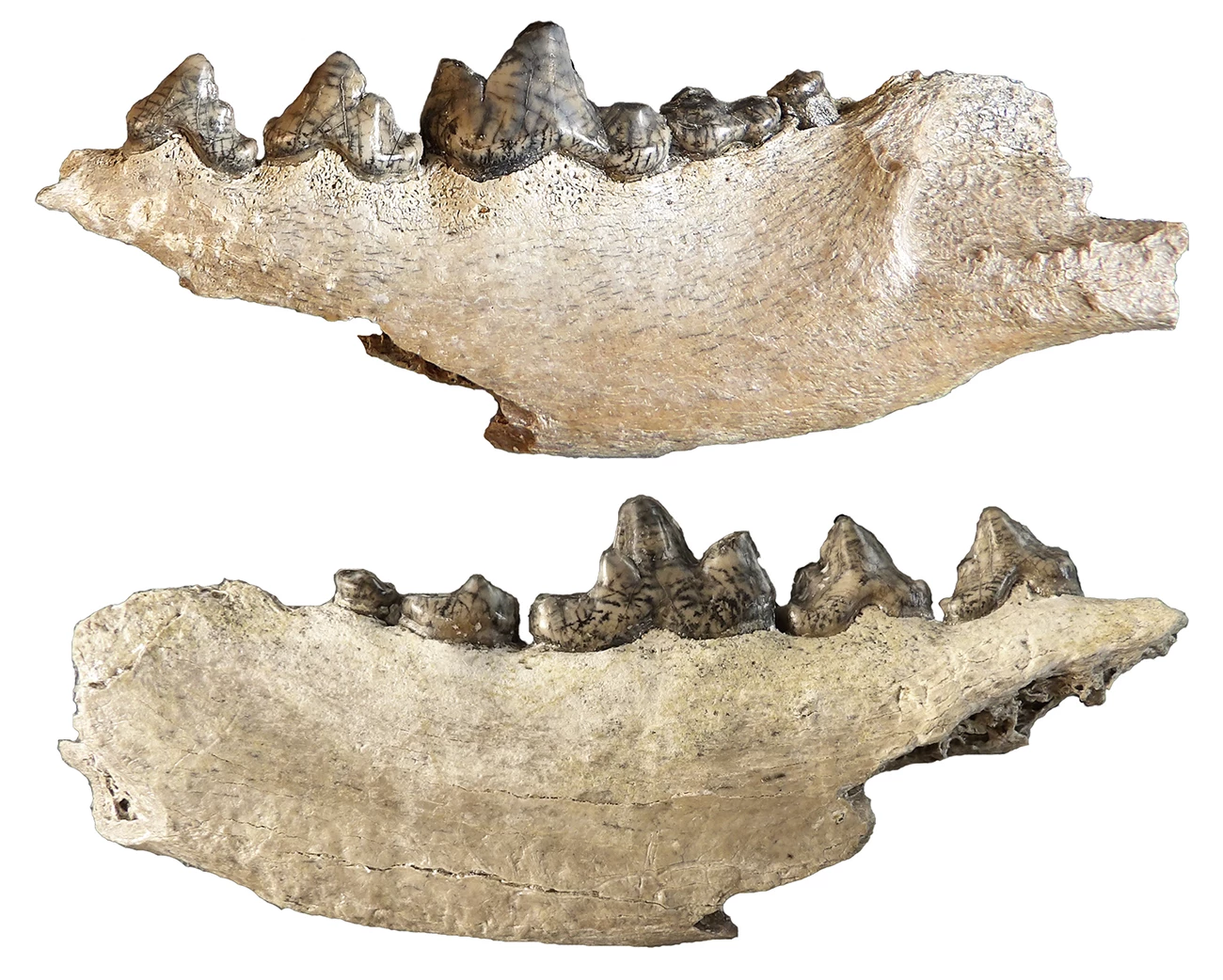
Image credit: NPS
In 2009, National Park Service staff found the jawbone of a fossil canid—a member of the dog family—eroding out of the sands at Hagerman Fossil Beds National Monument in south-central Idaho.
It was placed in the park’s museum, where it gathered dust for six years. During a museum collection inventory, co-author Kari Prassack pulled it out for being rather peculiar. Its size and potential age starkly contrasted with the area’s other known fossil canid species. Was it an entirely new species or just new to the park? The answer to that question, and the fossil’s age, could tell us much about life in Idaho approximately 3.9 million years ago and could even provide valuable insights about life today. But fossils of that age are much too old to be dated directly, so how do you figure out the age of something so ancient? We used volcanoes!
Hagerman’s Menagerie
If you visit Hagerman Fossil Beds, you will see a series of seemingly unremarkable brown bluffs next to the beautiful Snake River. To paleontologists, scientists who study fossils, these bluffs are exciting, representing a time when Hagerman was filled with a menagerie of modern-looking and more exotic animals. The Hagerman fossil beds formed during the Pliocene Epoch—a span of geologic time from 5.3 to 2.6 million years ago, when the Idaho landscape was quite different from today.
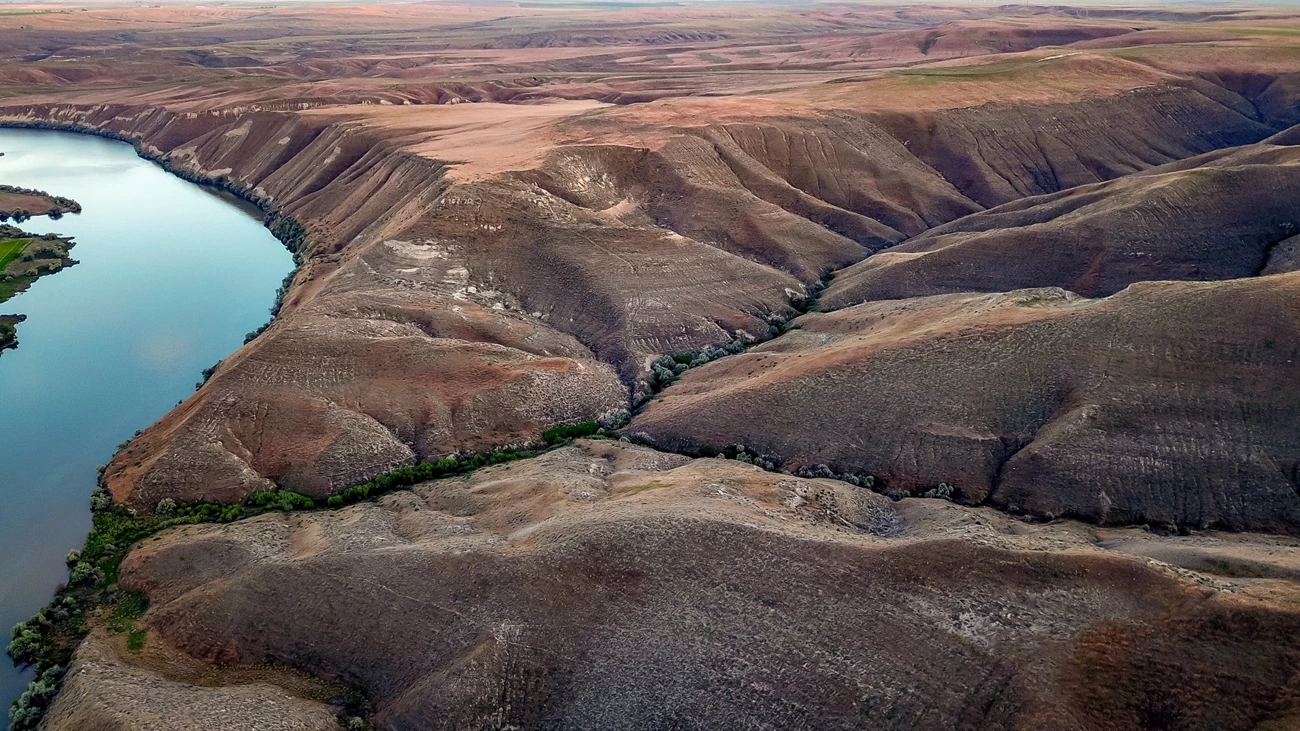
Image credit: NPS
An ancestral version of the Snake River once flowed across these lands. Hagerman was warmer and wetter then. It had a now-extinct lake, surrounded by wetlands, grassy fields, and forest, in stark contrast to today’s arid sagebrush steppe. Lydia Staisch is a U.S. Geological Survey geologist who studies how rivers and mountain-forming processes work together to change the landscape over time. She is one of several geologists trying to unravel the mysteries of Hagerman. "Past volcanic activity helped shape the landscape in many ways, including by changing the course of the Snake River and helping to create a large lake basin," Staisch says.
There were also many unique species of animal that are now extinct, such as giant ground sloths, bone-crushing borophagine dogs, saber-toothed cats, and mastodons.
Hagerman’s fossils reflect the diversity of the landscape’s ancient past, representing some 200 species of animals, including fish, turtles, snakes, birds, and mammals. The Pliocene was a time when many animals, such as Hagerman’s horses, otters, and beavers, would have looked like those living today. Some were even the direct ancestors of modern species.
But there were also many unique species of animal that are now extinct, such as giant ground sloths, bone-crushing borophagine dogs, saber-toothed cats, and mastodons. The Hagerman horse, Equus simplicidens, often steals the spotlight, but the carnivorans (cats, bears, otters, and dogs) are Hagerman’s hidden gems. There are 21 species of those, including the giant badger, Ferinestrix vorax, and the oldest New World river otter, Lontra weiri. Both species have not yet been found anywhere else in the world.
Finding the Time
To know what things were like in the past, we need to be sure when rocks and the fossils they contain were formed. Scientists commonly use carbon-14 dating to do that. Carbon-14 is a radioactive isotope of carbon that decays at a known rate. We can compare how much of it is left in a fossil bone, a thousand-year-old sandal, or even a lump of charcoal to the amount of carbon-12, which does not decay. It can be a great way to date anything organic, but it’s of little use for Pliocene fossils. This is because the process of becoming a fossil often causes all the organic matter to be replaced with minerals and elements like calcite, iron, and silica. And carbon-14 completely decays after 50,000 years, so in fossils as old as ours, it is completely gone.
We can date volcanic ash because some forms of volcanic minerals begin to decay when a volcano erupts.
Although we cannot use carbon to date Hagerman’s fossils, we can use volcanic ash, also called tephra. Explosive volcanic eruptions can blanket the landscape in a layer of ash across hundreds of thousands of square miles. Volcanic ash is composed of volcanic glass, rock fragments, and volcanic minerals. We can date volcanic ash because some forms of volcanic minerals begin to decay when a volcano erupts. This method requires that these minerals be present and preserved, which is not always the case. But several of the ashes at Hagerman do have the right minerals for us to analyze.
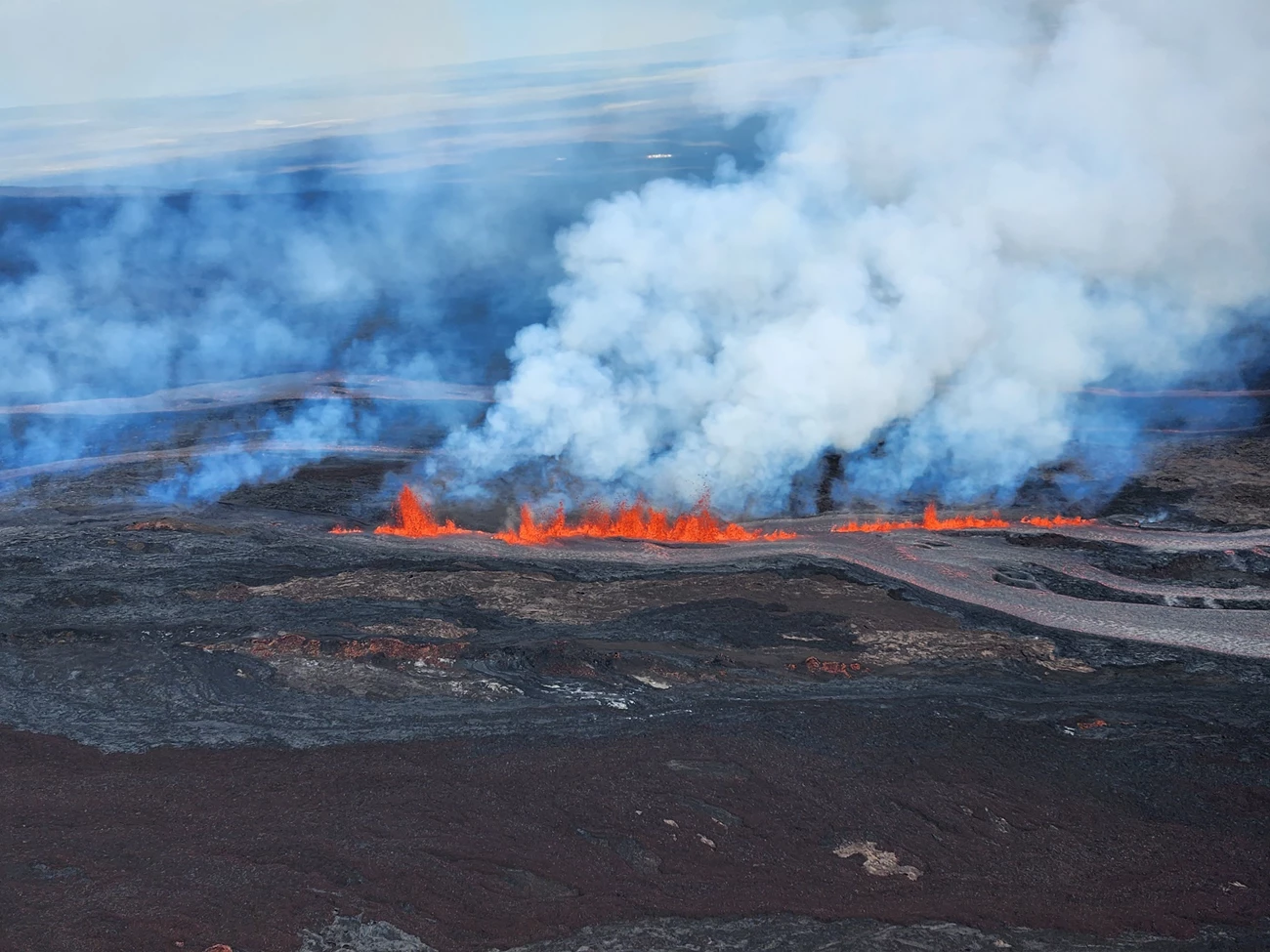
Image credit: USGS / K. Lynn
At Hagerman, we use the argon-40/argon-39 dating method. It works similarly to carbon-14 dating, except we look at a radioactive isotope of argon, an element present in certain volcanic minerals. Radioactive argon begins to decay when a volcano erupts. This method is very reliable for the older rocks we study. We can then indirectly date fossils by determining the age range for a fossil relative to the dated ash in the same area. This is very useful, as we often find fossils in rock types that we cannot directly date, like the sands, silts, and clays that make up sedimentary rocks.
Mapping Hagerman’s Ashes
In 2016, we formed the Hagerman Paleontology, Environments, and Tephrochronology (PET) Project. This was a collaborative, interagency project between Hagerman Fossil Beds National Monument and the U.S. Geological Survey Tephrochronology Project. The purpose of the project was to reconstruct Hagerman’s ancient past. Our first step was to get a better idea of the exact ages of the Hagerman fossils. Before the PET Project, we mainly used one dated ash outcrop known as bed G, which is 3.84 million years old. We used this to date fossil sites as either younger than (found above) or older than (found below) the suspected elevation of bed G. But that left much room for error, because the landscape over those millions of years was likely not totally flat.
Even if paleontologists found fossils at two different sites with similar elevations, the fossil species from those two sites may have essentially “missed” each other by hundreds of thousands of years.
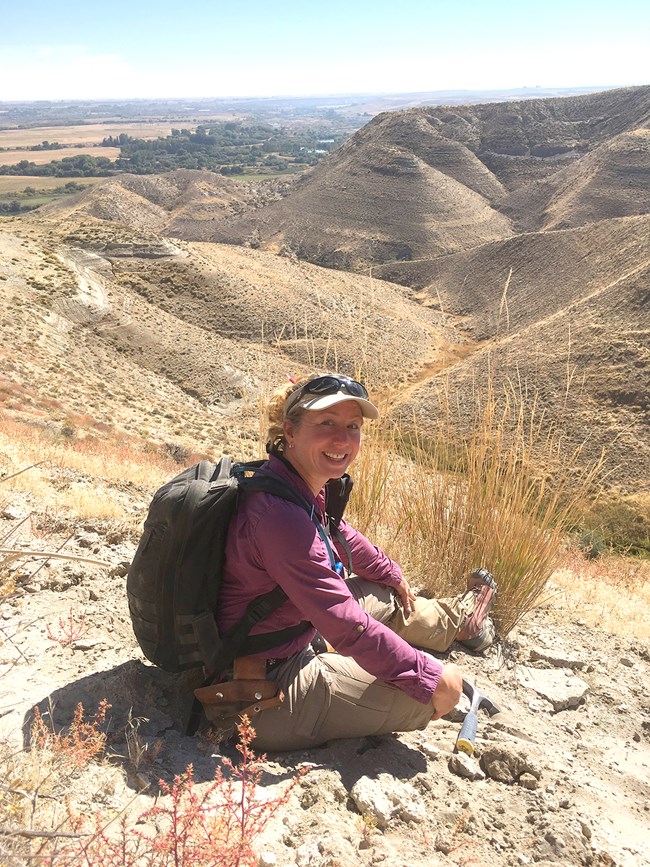
Image credit: USGS
Creating an accurate timeline through tracking past volcanic eruptions in an area with fossil sites works best when we account for differences in elevation when the ashes fell. If the ash was deposited in a shallow basin or up on a ridge, it could be lower (or higher) than elsewhere in the monument. Co-author Laura Walkup spent five seasons trudging up and down Hagerman’s steep-sided bluffs, finding and mapping volcanic ashes. This was to parse out more than 1.5 million years into more realistic chunks of time to study.
Walkup found 16 ash deposits at Hagerman that came from volcanoes nearby in Idaho and as far away as the Cascade Mountains in Washington. Through them, we confirmed the presence of faults from earthquakes and changes in the shape of the landscape from rivers scouring the surface in some places and depositing sediment in others. The ashes did not always project horizontally across the land, so the fossil sites at one elevation in one part of the monument could be a different age than those at the same elevation in a different part. Even if paleontologists found fossils at two different sites with similar elevations, the fossil species from those two sites may have essentially “missed” each other by hundreds of thousands of years and never interacted.
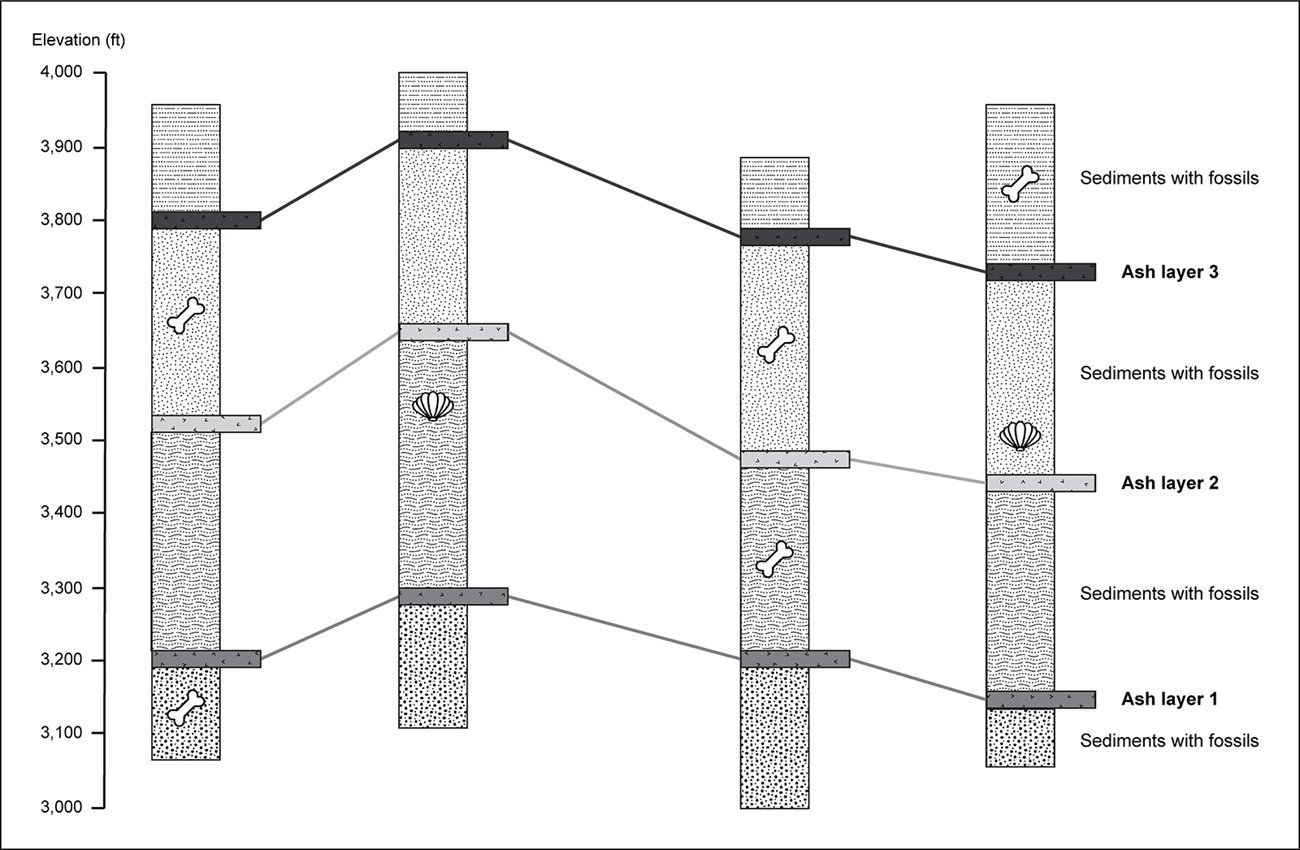
Image credit: USGS
A Dog by Any Other Name
Scientists name things so they can more easily discuss them and how they relate to one another. They classify wolves, coyotes, and domestic dogs as different species in the genus Canis, which belongs to the family Canidae. Canidae also includes jackals, foxes, and other “dogs,” like the Australian dingo. All animals in the same genus are more closely related to each other than to others in their family. Biologists use things like ear shape, pelt, behavior, teeth, bone structure, and genetics to identify a group of animals as a species and assign that species to part of a larger hierarchy.
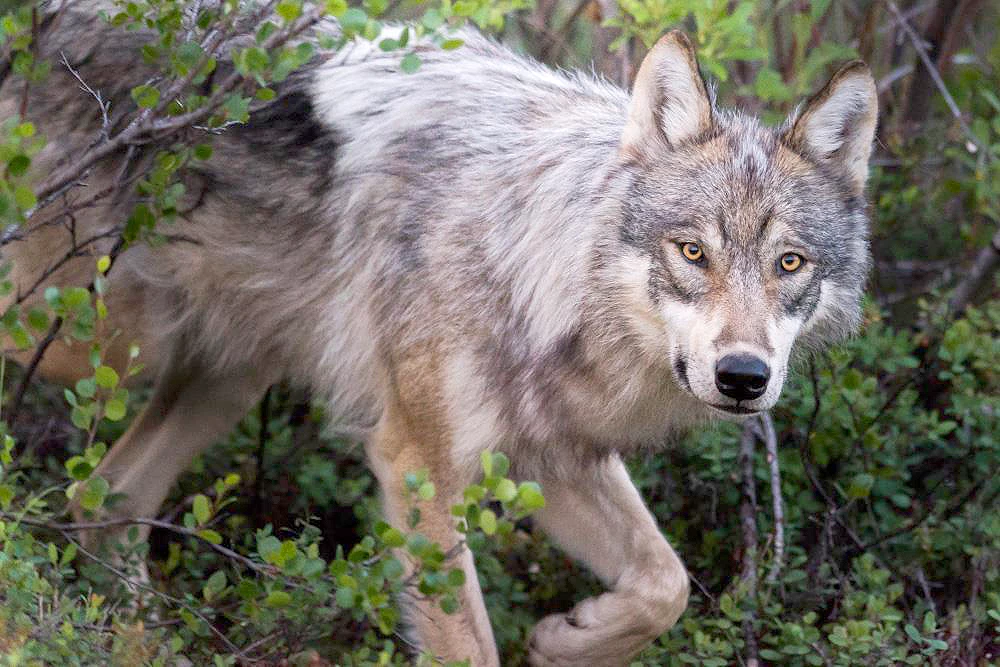
Image credit: NPS
Paleontologists similarly classify fossil animals, but we don’t have things like outward appearance, behavior, or (usually) genetic data to help us decide who those old bones belonged to. To make it even more tricky, not all teeth and bones become fossils. And if they are damaged prior to burial, we might end up with only part of a jaw or some fragmented limbs to work with. We must decipher a veritable bone fragment jigsaw puzzle to learn what an animal was and how it behaved.
Sometimes new information comes along that challenges our long-held understanding of the past.
That can make assigning scientific names and relationships a daunting task. And to make things more complicated, sometimes new information comes along that challenges our long-held understanding of the past. For example, we only recently learned that modern wolves likely evolved from ancestors in Europe and not from the dire wolves of the North American Pleistocene Epoch, which followed the Pliocene and lasted until about 12,000 years ago. Dire wolves went extinct at the end of the Pleistocene and have no living descendants. But paleontologists recognize that each discovery strengthens our understanding of the past.
We long thought we had a coyote-like canid at Hagerman named Canis lepophagus, but this species was later split up. Some, including those from Hagerman, were reassigned to the smaller Canis ferox. Then in 2020, other paleontologists concluded that the original skeleton of Canis ferox belonged to a different, older genus called Eucyon, which gave rise to Canis. This made the name Canis ferox invalid. Nearly all such specimens named Canis ferox were renamed Eucyon ferox.
But not Hagerman’s. These Hagerman canids were missing some very specific traits seen in the Eucyon, so they stayed in the genus Canis without a clear species name. We hope to someday find more fossils of this canid so that we can give it a proper (and hopefully longer lasting) name. We don’t intend to assign it back to the larger and more robust Canis lepophagus.
Yet the discovery of a second member of Canis at Hagerman shows we may have had Canis lepophagus here after all. The discovery did not come from a new find in the field; it came from a fresh look at a fossil already squirreled away in museum collections. The fossil was the left side of a lower jaw. It was collected in 2009, around the time Canis lepophagus was effectively kicked off the list of animals known from Hagerman.
The fossil’s collector perhaps recognized just how robust it was, because that person placed it in the museum labeled simply as Canis. In 2016, co-author Prassack pulled this specimen out of a museum drawer, expecting to assign it to Canis ferox, the canid known from Hagerman at that time. But she recognized notable differences in the depth and thickness of the jaw compared to the other Hagerman specimens of that smaller canid.
What’s That in Dog Years?
Which brings us back to time and volcanic ashes. This canid jaw was found near the base of a bluff that is informally called the “Sahara complex” because of a massive sandy basin near its top. This bluff was perfect for testing Walkup’s ash mapping, because five ash layers were found on its steep slope.
The fossil jaw and an associated foot bone were found well below the 3.84-million-year-old bed G ash layer. These fossils are above another ash layer named bed F that we think is at least 3.9 million years old based on previous paleomagnetic studies. We may update bed F’s age with some newer techniques and paleomagnetism measurements, but it’s unlikely to change drastically. The second canid is older than 3.84 but probably not quite as old as 3.9 million years. This is hundreds of thousands of years older than most other members of Canis lepophagus.
Why Paleontologists Dream about Teeth
We describe a fossil by comparing its size and shape to all known fossil species that are similar. Sometimes we must look at many different groups of animals to determine the fossil animal’s family. Every paleontologist hopes to find teeth, because the number of teeth, their sizes, and their many distinct cusps, ridges, and points are very helpful in figuring out what creature they belonged to.
We knew our fossil belonged to a carnivore, but the number and shape of its teeth were unlike those of a hyena or larger non-canid, like a cat or bear.
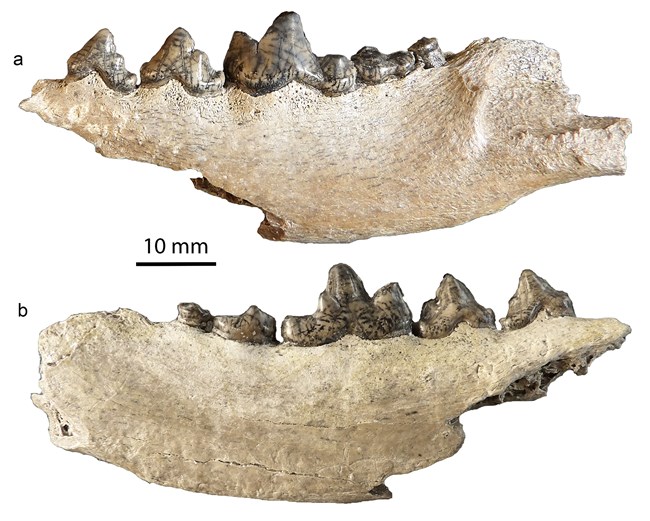
Image credit: NPS
In this case, we knew our fossil belonged to a carnivore, but the number and shape of its teeth were unlike those of a hyena or larger non-canid, like a cat or bear. It was a canid, but not a member of the extinct borophagine dogs, with their distinctive bone-crunching jaws. We measured and compared the teeth and jawbone to six other fossil canid species and to modern coyotes, jackals, and wolves.
We used statistical analysis to see if our measurements of the other canids’ jaws and teeth differed significantly from those of this fossil. We found that our fossil jaw was deeper and thicker than even the largest previously known specimens of Canis lepophagus, and much more so than Hagerman’s other, now-unnamed member of Canis. But its premolars (front cheek teeth) were big and bulbous like Canis lepophagus, and the nooks and crannies of its first molar were also most similar to that animal.
The Hagerman Triad
We think Hagerman had three canids: the smaller coyote-like, unnamed Canis species, the larger coyote-like Canis lepophagus, and a borophagine dog, Borophagus hilli. But we have been down this road before with Hagerman’s unnamed canid species. We therefore decided to refer to the second canid as Canis aff. C. lepophagus. The "aff". stands for affinity, a term used to reflect variation within and across species. This variation can make it difficult to assign a fossil to one species over the other. Since we only had one jaw and a foot bone to work with, we chose to be conservative. Finding additional jaws and teeth of this canid at Hagerman would help confirm our choice.
Fossil lineages are more likely to increase than decrease in body size over time. It is unusual that our fossil, being older, is larger than its younger counterparts.
We know living canid species can vary and that Canis lepophagus was present elsewhere in Idaho during the Pliocene. It therefore makes sense to place our fossil (tentatively) in Canis lepophagus, as its teeth are very similar and there are no other known fossil canid species it could belong to. But the jaw is even more robust than those of the other members of Canis lepophagus, and it would be the second oldest example of that species. Pleistocene fossil canids, for which we have a much better record, exhibit shifts in both body size and shape over time due to things like climate and competition. With few exceptions, like on islands, fossil lineages are more likely to increase than decrease in body size over time. It is unusual that our fossil, being older, is larger than its younger counterparts.
Because we have such a robust jawbone and know there is a lot of variation in the fossils of Canis lepophagus from other fossil sites in North America, we think it is possible there are two lineages in the North American Pliocene under the name Canis lepophagus. Perhaps ours could just be a very beefy male; gender-based variation is not uncommon in modern and fossil canids. Even ecologists sometimes have difficulty separating out different species and subspecies of modern wolves, coyotes, and jackals. Size and shape can vary within a species, and some species can crossbreed, making it even harder to figure out what they are.
A Species-Rich Past Shows Us What We’ve Lost
Determining if these fossils are from a single species, two subspecies, or perhaps two different species is less important than confirming the presence of a larger canid in the Pliocene at Hagerman. It would have been one that lived alongside another large canid, the bone-crushing Borophagus hilli, and a smaller coyote-like member of Canis, along with 19 other types of carnivorans. This kind of species diversity in carnivorans is uncommon in the fossil record. It points to a variety of environments in Hagerman during the Pliocene, like woodlands, grasslands, and waterways.
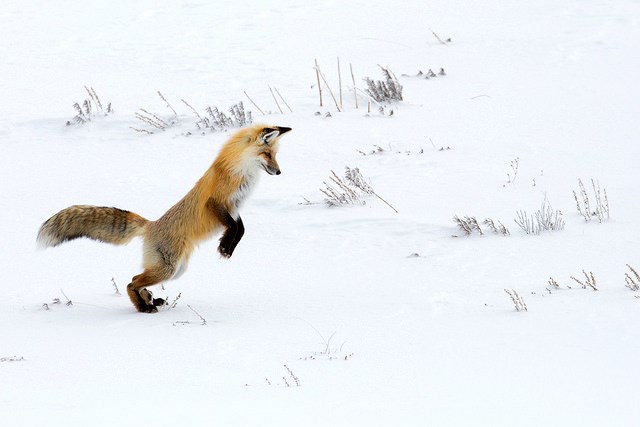
Image credit: NPS / Neal Herbert
We know how modern-day animals move: badgers dig, dogs run, cats pounce, racoons climb, and otters swim. Their bones are shaped to perform these actions. We look at the fossil record to find similarly shaped or proportioned bones. This tells us that many of the fossil animals from Hagerman are the direct ancestors or otherwise closely related to species found today. We also know this from the diversity of prey species that were available to consume in the open grasslands, wetlands, lakes or woodlands of Hagerman. Hagerman had a healthy, diverse ecosystem in the Pliocene that was unlike what we find in southern Idaho today.
It is rare to find this much species diversity today outside of protected spaces like Yellowstone National Park, which boasts a healthy 14 carnivoran species. Fossil records like this, from just moments—geologically—before humans appeared on the landscape, can help us better understand the current biodiversity crisis and where we are in terms of species loss. Understanding what groups of animals survived and thrived or perished during past events can help us better predict our future.
Change In the Blink of an Eye—Geologically Speaking
Our story of a new “old dog” is about more than another fossil species of Canis at Hagerman Fossil Beds. It demonstrates the importance of having museum collections and making them accessible to scientists. This story also highlights the value of re-examining existing collections when doing scientific research. And it shows the benefits of interdisciplinary approaches to data collection. Interagency collaboration is crucial to science in parks because it brings a variety of expertise, techniques, and perspectives. More scientific questions can be answered by collaborating with colleagues from different disciplines.
More scientific questions can be answered by collaborating with colleagues from different disciplines.
As National Park Service Senior Paleontologist Vince Santucci put it, "Our investment in the management, conservation, and stewardship of paleontological resources undertaken today will enhance the opportunities for new fossil discoveries, scientific research, and public education in the future." At around six square miles, Hagerman Fossil Beds National Monument isn’t the largest national park in the system. But it has outsized importance for understanding how much these lands and the animals that live here have changed in just—geologically speaking—a few million years.
About the authors

Kari Prassack is an archeologist and paleontologist with Glen Canyon National Recreation Area. She studies carnivorans and birds. Image credit: NPS

Laura Walkup is a geologist with the U.S. Geological Survey. She studies volcanoes. Image credit: USGS
